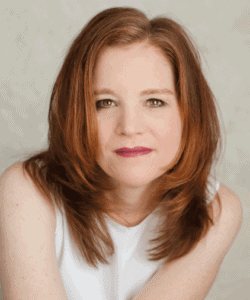I recently finished reading Jody Hedlund’s latest novel in her orphan train series, Searching For You. Having thoroughly enjoyed the series, I was interested to learn more about the inspiration behind the story and the author. Jody Hedlund answers some of these questions below:
What is the inspiration behind your orphan train series?
I have long been fascinated by the era of the Orphan Trains and the heart-wrenching stories of the homeless and helpless young orphans that were taken from eastern cities and shipped west by the dozens. I was familiar with stories of those scared orphans who were placed out in what was thought to be a more wholesome, healthy environment of the newly settled Mid-Western states. Some of the orphans found happy endings and were adopted into loving families. Others experienced great abuse and heartache in their new homes.
While stories of the orphans who rode the trains have been told—and rightly so—the stories of the women who were involved in the movement are not as well known. One of the things I particularly like to do when telling my stories, is focus on women who have been overlooked by the pages of history. I consider it a great privilege to be able to bring forgotten women to life for our modern generation. Thus, throughout this series, I’ll be focusing each book on a different aspect of the Orphan Train movement, particularly from the perspective of women who experienced riding the trains in one form or another.
How did you come up with the idea for the third book in the series, Searching For You?
With You Always, the first book in the series, centers around adult women who rode the orphan trains in a special limited placement for homeless and jobless women. The second book, Together Forever, depicts the orphan train experience through the eyes of placing agents who worked for the Children’s Aid Society.
Since the first two books view the orphan train movement from the lenses of grown women, in the third book I wanted to find a way to give the perspective directly from an orphan. However, in my initial planning, I wasn’t quite sure how to pull off an orphan’s view since my heroines are always adults.
As I wrestled through how to accomplish this third perspective, I crafted a young woman who was coming of age and could pose as one of the older orphan train children who were in high demand because of their ability to help contribute to the heavy workloads of families struggling to survive in the farming communities of the Mid-West.
What was the goal of the orphan train movement?
The Children’s Aid Society hoped to make a difference in the lives of children through what was called its “Emigration Plan” which is now known as the orphan train movement. Similar to the indenture system that had been used since the founding of the nation, the Emigration Plan sought to reform poor children by placing them in respectable homes where they would be influenced by godly Christian parents.
In exchange for a home and basic necessities, the children were expected to contribute to the family. Charles Loring Brace, the founder of the Children’s Aid Society, idealized country families, believing that the best homes were found in rural areas. He said, “The cultivators of the soil are in America our most solid and intelligent class.” Thus, the Emigration Plan worked relentlessly to take children away from the “evil” vices of the city and place them in the more wholesome influences of the country.
What challenges did you face in writing this particular story?
The placements weren’t always as ideal as the Children’s Aid Society hoped. I attempted to portray a variety of types of placement, giving light to both the positive and negative situations the children faced. During my research, I found numerous stories of real children who rode the trains, were adopted into loving families and grew up to appreciate their new homes and lives. I also read just as many tragic stories of children who didn’t fare well, were placed in multiple homes, were abused, and struggled to find fulfilment for the rest of their lives.
What are you working on next?
I’m in the editing phase of the first book of a brand new series, A Reluctant Bride, which releases in June of 2019 (next summer). The series is inspired by several bride-ships that left England in the early 1860s and sailed to British Columbia in Canada where there was a shortage of women. When the first bride-ship arrived in Vancouver, hundreds of men lined the shores to greet them and be the first to find a bride.
As I was researching this fascinating era, questions kept surfacing. What kind of woman would join a bride-ship? Why would these women leave everything they knew to sail halfway around the world for the purpose of becoming brides to men they didn’t know? I hope you’ll join me in exploring the answers to these question as I delve into my new series.
 Jody Hedlund is the bestselling author of over a dozen novels, including Luther and Katharina, winner of the 2016 Christian Book Award. She received a bachelor’s from Taylor University and a master’s from University of Wisconsin, both in social work. Currently, she makes her home in Midland, Michigan, with her husband and five busy children. Connect with her on her website jodyhedlund.com.
Jody Hedlund is the bestselling author of over a dozen novels, including Luther and Katharina, winner of the 2016 Christian Book Award. She received a bachelor’s from Taylor University and a master’s from University of Wisconsin, both in social work. Currently, she makes her home in Midland, Michigan, with her husband and five busy children. Connect with her on her website jodyhedlund.com.

